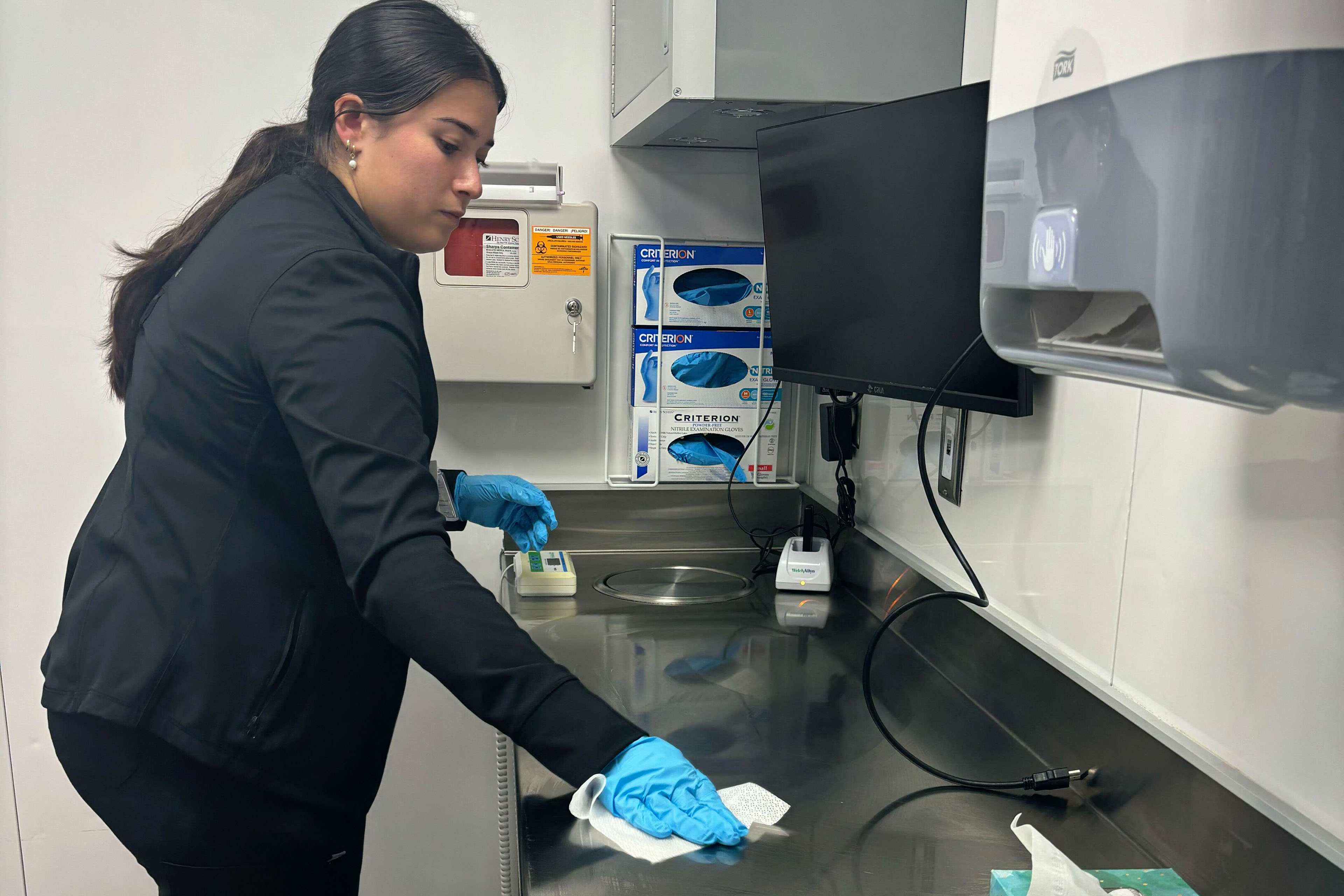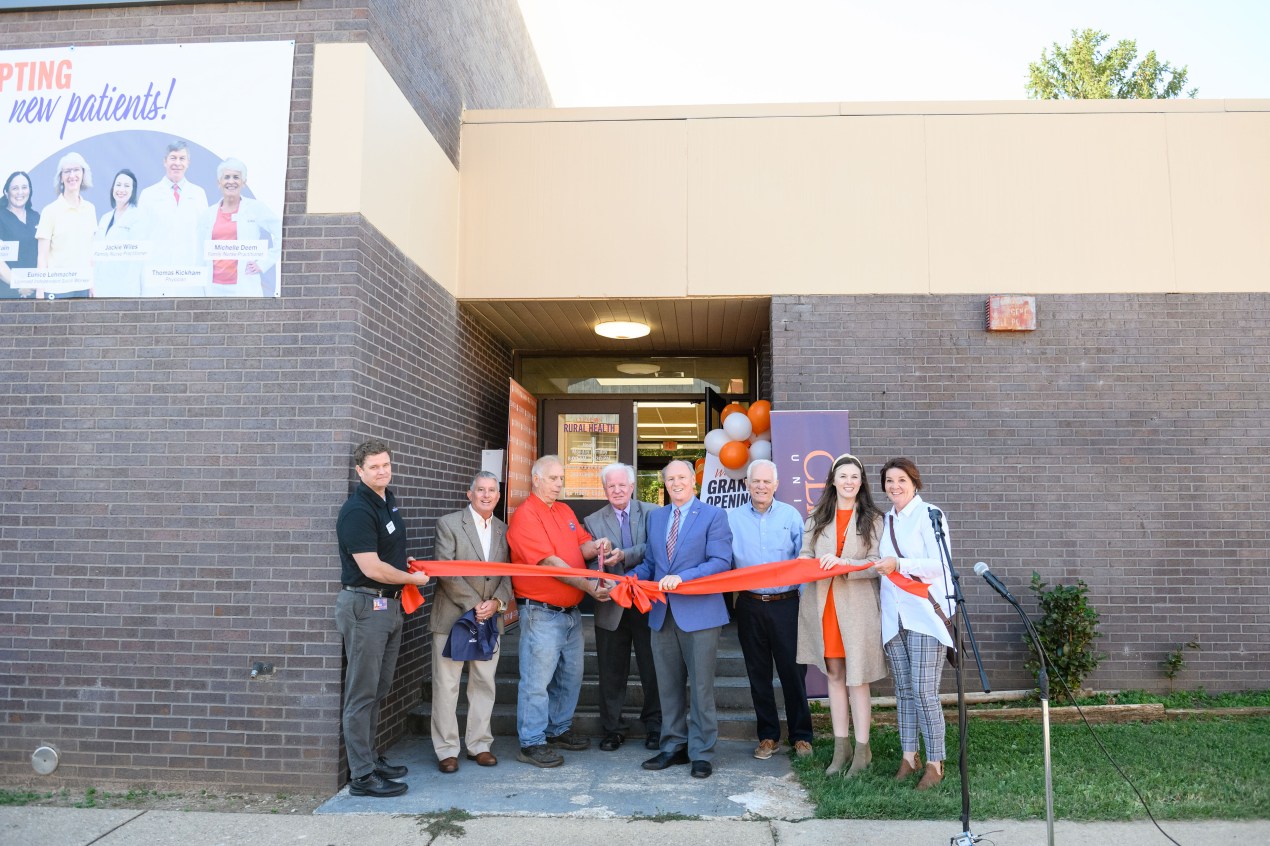WALHALLA, S.C. — Nestled in the foothills of the Blue Ridge Mountains, a small primary care clinic run by Clemson University draws patients from across the region. Many are Hispanic and uninsured, and some are willing to travel from other counties, bypassing closer health care providers, just to be seen by Michelle Deem, the clinic’s bilingual nurse practitioner.
“Patients who speak Spanish really prefer a Spanish-speaking provider,” Deem said. “I’ve gotten to know this community pretty well.”
Clemson doesn’t operate an academic medical center, nor does it run a medical school. Arguably, the public university is best known for its football program. Yet, with millions of dollars earmarked from the state legislature, it has expanded into delivering health care, with clinics in Walhalla and beyond. School leaders are attempting to address gaps in rural and underserved parts of a state where health outcomes routinely rank among the worst in the country.
“Some of these communities have such high need,” said Ron Gimbel, director of Clemson Rural Health, which operates four clinics and a fleet of mobile health units as part of the university’s College of Behavioral, Social and Health Sciences. “They have so many barriers that impact their ability to be healthy.”
Clemson Rural Health is one of several programs attempting to meet this need in the state.
“Rural health is trendy,” said Graham Adams, CEO of the South Carolina Office of Rural Health.

State lawmakers nationwide are spending millions of dollars to address a rural health care crisis long in the making. For more than a decade, though, Republican-controlled legislatures in most Southern states have refused billions in federal funds that would provide public health insurance coverage to more low-income adults. These are the same states where racial health disparities and health outcomes are often worse than in other regions.
Nearly every state has extended Medicaid coverage for women in the months after they give birth. But 10 states haven’t fully expanded Medicaid coverage with federal money made available under the 2010 Affordable Care Act. Seven of these states — Alabama, Florida, Georgia, Mississippi, South Carolina, Tennessee, and Texas — are in the South. With few exceptions, adults without children in these states don’t qualify for Medicaid coverage, regardless of their income level.
Georgia Gov. Brian Kemp and South Carolina Gov. Henry McMaster, both Republicans, recently announced plans to expand Medicaid in limited ways to include some parents. The South Carolina plan would impose work requirements on some of these newly eligible Medicaid beneficiaries, while the Georgia plan would allow some parents of young children to skirt the state’s existing Medicaid work rules. Both plans require federal approval.
Jonathan Oberlander, a professor and health policy scholar at the University of North Carolina, said he doesn’t expect to see any of the remaining states rushing to fully expand Medicaid. Before Donald Trump took office on Jan. 20, Republicans in Washington had already expressed their intention to dramatically cut spending for Medicaid, which covers 72 million people at a cost of nearly $900 billion.
“There’s a large gray cloud hanging over Medicaid expansion right now, and that’s because there’s so much uncertainty about what the Trump administration and congressional Republicans are going to do,” Oberlander said.
Even so, in South Carolina this year the advocacy group CoverSC plans to lobby the General Assembly to pass a bill to adopt Medicaid expansion, said Beth Johnson, regional government relations director for the American Cancer Society Cancer Action Network and a CoverSC board member. The state’s legislative session began Jan. 14.
If such a measure were approved, the federal government would cover 90% of the state’s Medicaid expansion costs and South Carolina would be expected to pay 10%, or an estimated $270 million during the first year, according to a 2024 report by the Milken Institute School of Public Health at George Washington University.
Across all 10 non-expansion states — which, outside the South, also include Kansas, Wisconsin, and Wyoming — about 1.5 million people fall into a coverage gap, according to 2024 estimates from KFF, the health information nonprofit that includes KFF Health News. That means they do not qualify for Medicaid coverage or financial assistance to buy insurance through the federal marketplace.
Many of the people who would qualify for Medicaid if these states were to expand eligibility are gig workers, Johnson said. They play music, drive for Uber, or deliver pizza, and they typically don’t qualify for health insurance through their jobs.
“They are providing services that we all appreciate,” she said. “And they simply can’t afford health insurance.”

In some South Carolina communities, Clemson Rural Health attempts to fill this gap by providing primary care, cancer screenings, nutrition education, and diabetes management for uninsured patients free of charge or at reduced rates. Only about half of the patients seen by Clemson Rural Health have health insurance, Gimbel said, compared with 92% of the U.S. population.
During the current state fiscal year, Clemson Rural Health has been underwritten by a $2.5 million contract, its largest source of funding, from the state Department of Health and Human Services, which administers Medicaid in South Carolina and operates with a budget approved by state lawmakers.
That’s a relatively small amount of money compared with the $47.5 million the state legislature has given to the Medical University of South Carolina in recent years to move into rural communities. MUSC has served Charleston for most of its 200-year history, but since 2019 it has expanded across the state by purchasing, building, or partnering with seven rural hospitals — some on the brink of closure — and one freestanding emergency department. MUSC is set to open an additional rural hospital this year.
Other states have made similar investments. The University of Georgia, for example, has established a new medical school, partly to send more physicians into underserved and rural areas. The Georgia General Assembly kicked in half the cost of a new $100 million building for medical education and research in Athens.
Meanwhile, the Tennessee General Assembly passed a budget last year that included $81 million for a variety of rural health initiatives.
Outside the South, state legislatures in Colorado, Nevada, West Virginia, and elsewhere have made recent investments in rural health, in addition to expanding Medicaid eligibility.
Some of this spending has been prompted by a wave of rural hospital closures — more than 100 since 2010, according to the Cecil G. Sheps Center for Health Services Research at the University of North Carolina.
It’s not yet clear what long-term impact some of these initiatives will have — for instance, whether the Clemson program will “reduce premature mortality, decrease preventable hospitalizations, and improve overall quality of life,” as it aims to do, according to its website. Some public health experts point out that bolstering the number of rural clinics, hospitals, and doctors in the South won’t matter much if patients can’t afford to make an appointment.
“Lack of ability to pay is one of the greatest barriers,” said Adams, the Office of Rural Health chief.
Oberlander said conservative lawmakers often consider projects such as building new rural clinics more politically palatable than expanding Medicaid coverage.
“The further away you get from the ACA, the less polarized the politics of health care,” he said.
South Carolina Senate President Thomas Alexander, a Republican who lives in Walhalla, said the General Assembly is willing to invest in some rural health initiatives to improve health care access.
“Just because you expand Medicaid doesn’t mean you’ve expanded access to the services,” Alexander said. “I want to focus on expanding access to the services.”
Gimbel would not comment on Medicaid expansion in South Carolina, and he said it’s too soon to know how federal Medicaid changes under the Trump administration might affect funding for Clemson Rural Health, which currently receives money from the state’s Medicaid agency. But making the Clemson program financially solvent might take several more years, he said.
“If rural health was profitable,” he said, “we wouldn’t have a rural health problem.”







